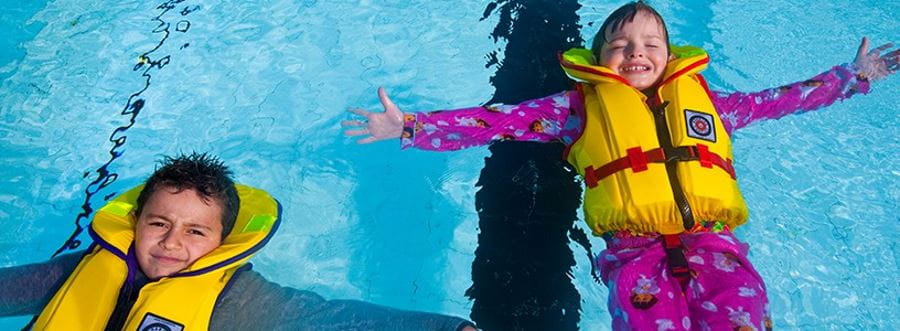
An unexpected entry into the water due to a fall was the second leading activity prior to drowning in the 2022-23 financial year, contributing to 15% of all drownings. This is particularly dangerous if falling into water fully clothed. Being clothed can pose an increased drowning risk as clothing becomes extremely heavy once wet — especially materials like denim and wool — making it difficult to swim traditional strokes.
As part of the Swim and Survive program, we ensure participants are equipped with the skills necessary to survive such an event. Our clothed swimming sequences start in Stage 8 and progress through until Stage 15. During these stages the clothes become longer, heavier and harder to swim with.
These clothed swim progressions have the following aims:
- To simulate an unexpected fall into water wearing clothing, enabling students to experience the heaviness of garments when wet and the endurance required to swim even a short distance
- To learn survival swimming strokes and skills while wearing clothing
- To learn how to take clothing off while in the water, particularly heavy items
- To understand the benefits of keeping light but tight-fitting clothing on in cold water
When instructing the survival sequences, including the clothed swim, it is important to ensure students can keep their head above the water, alternating from survival strokes to floating or sculling, if necessary.
As an instructor, it is your job to explain when this kind of incident can occur and why students should use these skills.
The lower stages of our Swim and Survive program do not include the wearing of clothing, as the focus of these stages is the development of survival swimming strokes and skills to increase endurance and distance, prior to adding this more challenging element.
For more information about each of the Swim and Survive stages and their requirements please refer to the Levels page at the link below.
